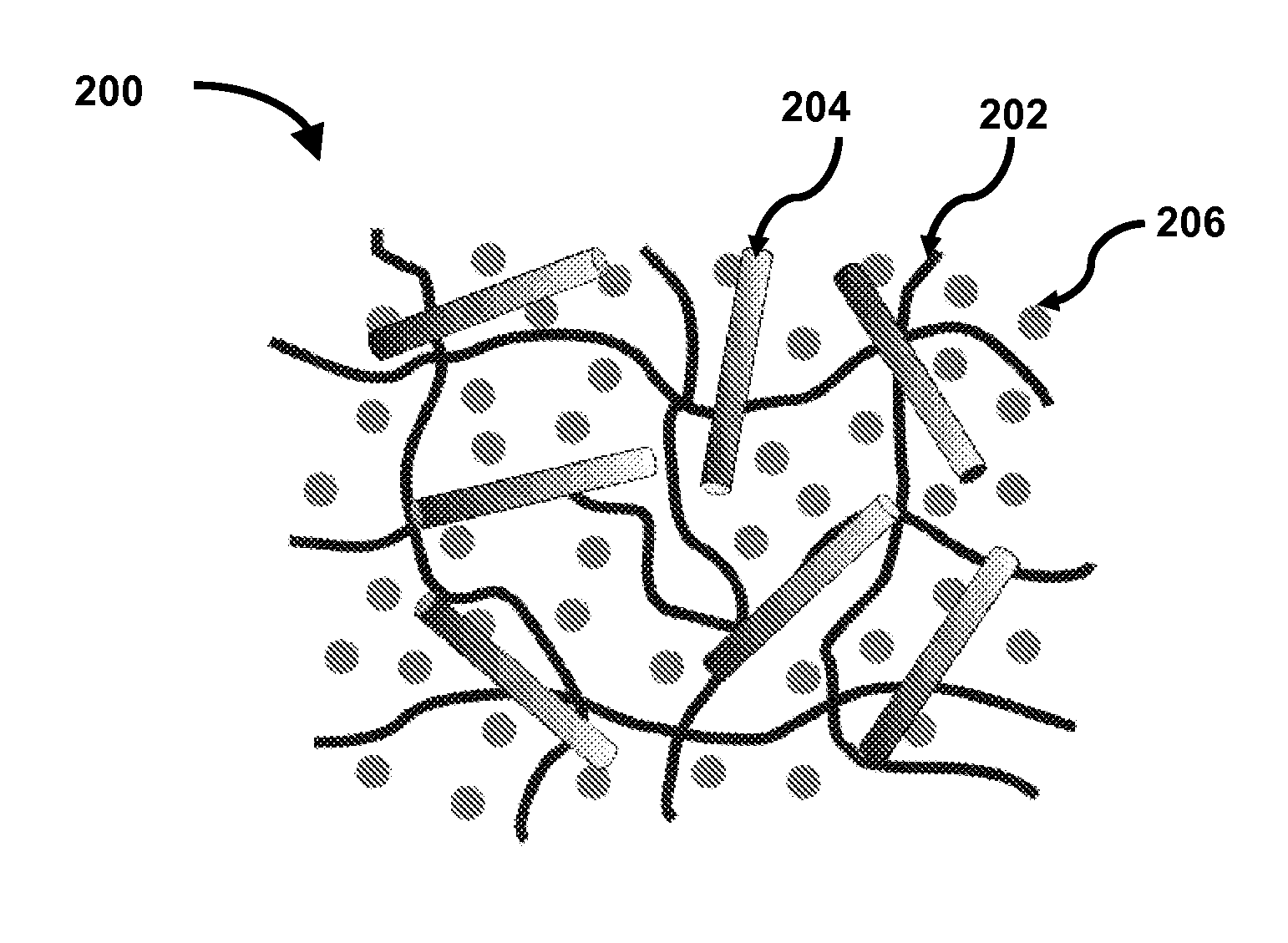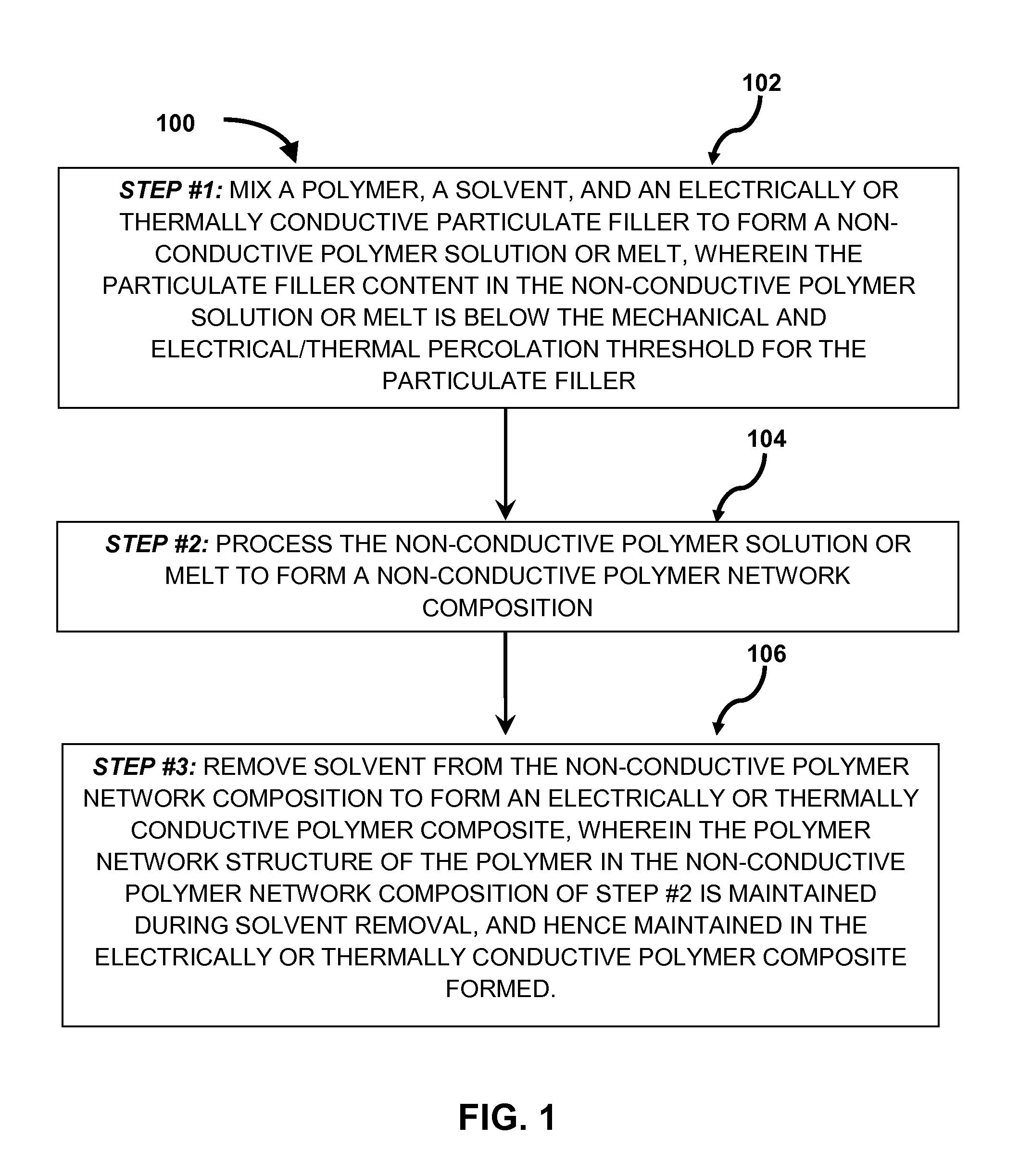Solvent assisted processing to control the mechanical properties of electrically and/or thermally conductive polymer composites
a technology of electrically and/or thermally conductive polymer composites and solvency-assisted processing, which is applied in the direction of non-metal conductors, conductors, metal/alloy conductors, etc., can solve the problems of difficult processing, inability to independently tune mechanical and electrical/thermal responses, and traditional methods of obtaining conductivity in polymeric materials
- Summary
- Abstract
- Description
- Claims
- Application Information
AI Technical Summary
Benefits of technology
Problems solved by technology
Method used
Image
Examples
Embodiment Construction
[0024]As used herein, the phrases “particle-filled, non-conductive polymer solution or melt,”“non-conductive polymer solution or melt,” and “polymer solution or melt” are used interchangeably to refer to a solution or melt resulting from the initial mixing of a polymer, a solvent, and a conductive particulate filler as set forth, for example, in Step #1 of FIG. 1 herein.
[0025]“Conductive particulate fillers” may be electrically conductive, thermally conductive, or both.
[0026]The phrases “electrically or thermally conductive particulate fillers,”“electrically or thermally conductive fillers,” and “electrically or thermally conductive filler particles” are used interchangeably herein.
[0027]The phrase “electrically and / or thermally conductive polymer composite” as used herein is intended to include a conductive polymer composite within the scope of the present invention that may be electrically conductive, thermally conductive or both electrically and thermally conductive. If electrica...
PUM
| Property | Measurement | Unit |
|---|---|---|
| volume percent | aaaaa | aaaaa |
| volume percent | aaaaa | aaaaa |
| volume percent | aaaaa | aaaaa |
Abstract
Description
Claims
Application Information
 Login to View More
Login to View More - R&D
- Intellectual Property
- Life Sciences
- Materials
- Tech Scout
- Unparalleled Data Quality
- Higher Quality Content
- 60% Fewer Hallucinations
Browse by: Latest US Patents, China's latest patents, Technical Efficacy Thesaurus, Application Domain, Technology Topic, Popular Technical Reports.
© 2025 PatSnap. All rights reserved.Legal|Privacy policy|Modern Slavery Act Transparency Statement|Sitemap|About US| Contact US: help@patsnap.com



